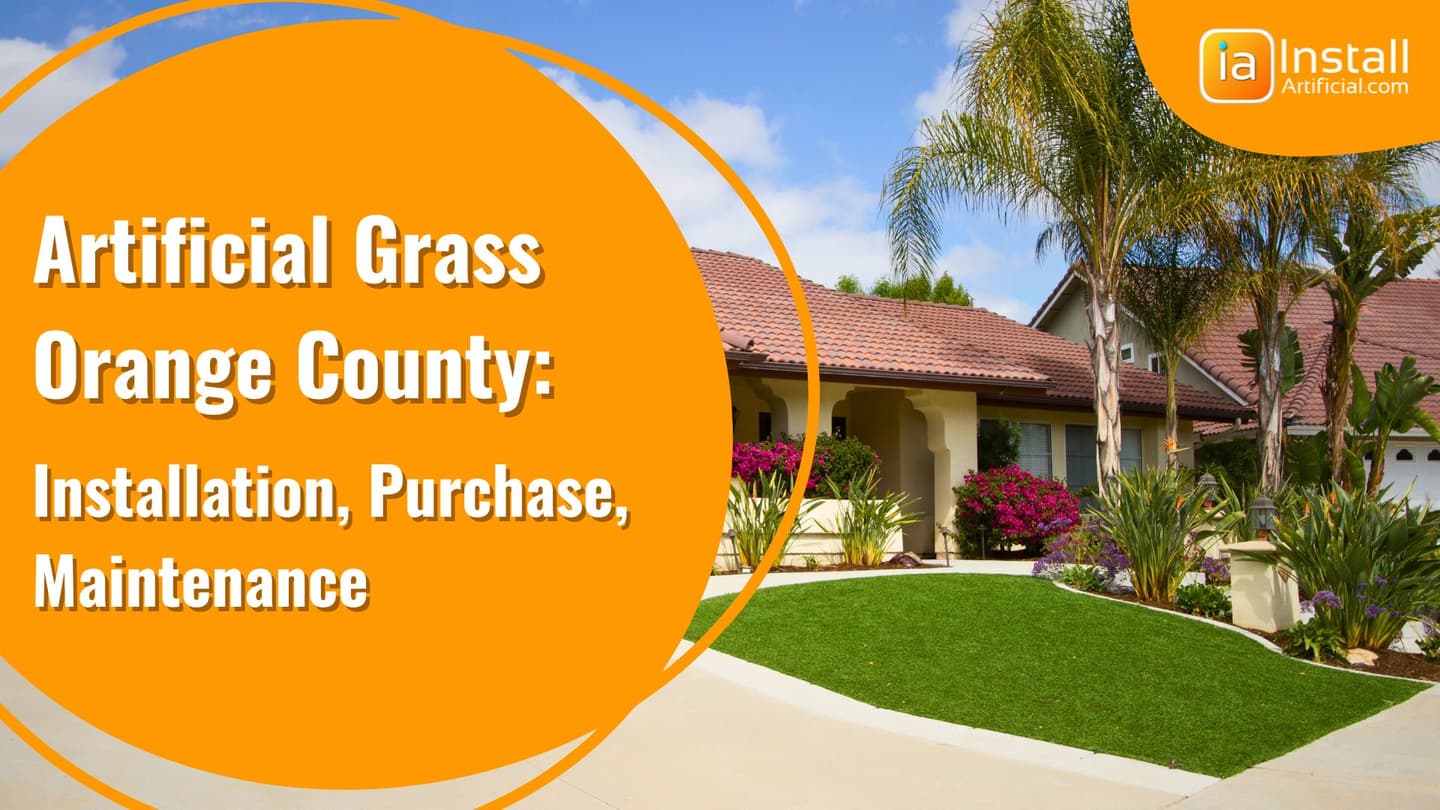
A comprehensive guide for buying and installing artificial grass in Orange County.
A comprehensive guide for buying and installing artificial grass in Los Angeles.
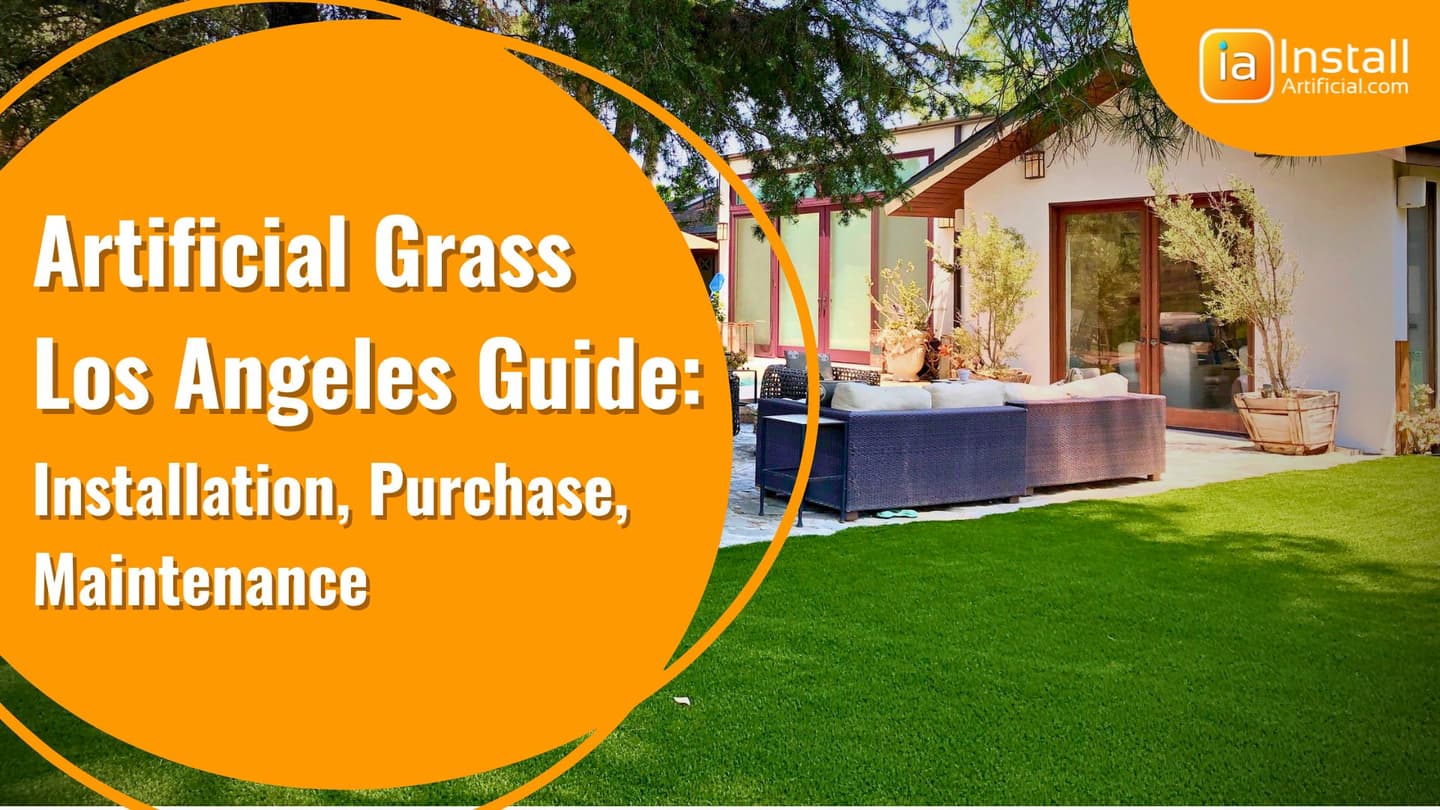
1. Their backyard lacks natural grass, with only bare dirt as a result of the shade inhibiting grass growth.
2. The havoc wreaked by dogs on natural lawns, tearing them to shreds and digging holes, leads to a constant trail of mess into the living room.
3. The constant play of kids takes a toll on natural grass, unable to withstand the intensity of soccer games, playdates, and pool activities.
4. Fed up with the endless cycle of mowing, seeding, and high water bills, they desire to conserve water and eliminate the hassle.
5. The demise of natural grass is attributed to neglect in watering by the tenant or a lackluster curb appeal that didn't survive the escrow process.
While a natural lawn is ideal, limited options are available if you're dealing with dirt instead.
Artificial grass is not for everybody. While artificial grass may offer numerous benefits, it's essential to consider the disadvantages as well. One of the main drawbacks of artificial grass is its initial cost, which can be higher than natural grass. Additionally, artificial grass can heat up significantly in direct sunlight, making it uncomfortable to walk on barefoot during hot weather. Some people also find that artificial grass lacks the natural look and feel of real grass, which can be a downside for those who prefer the authenticity of a natural lawn. Despite these drawbacks, the water-saving and low-maintenance aspects of artificial grass can still make it a viable option for many homeowners in Los Angeles.
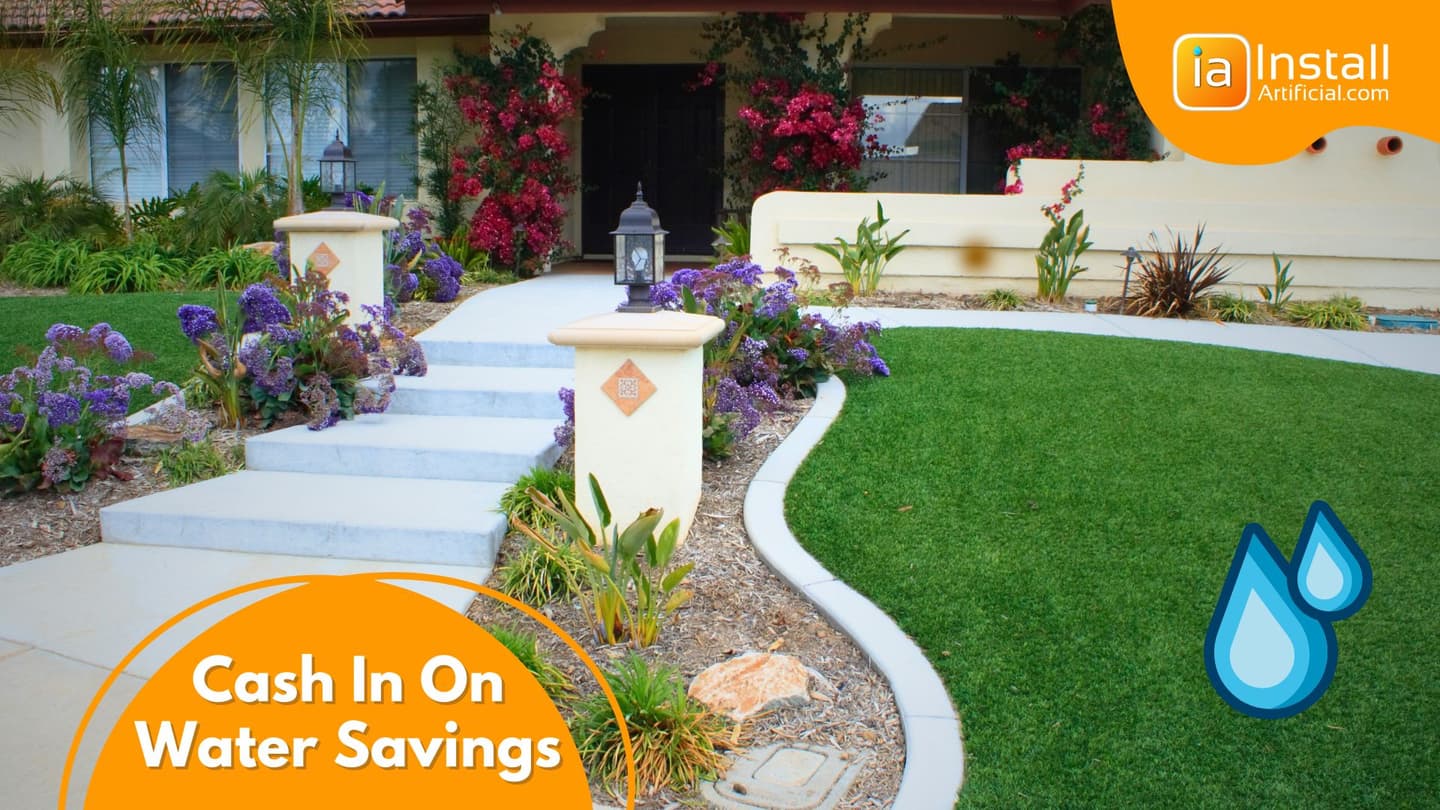
Transitioning to artificial grass in Los Angeles can save you time and money on lawn care and help conserve water in drought-prone areas. With an average front yard in Los Angeles measuring around 800 square feet, the amount of water consumed to irrigate natural grass can be around 80% of your water bill. By making the switch to artificial turf, homeowners can save a substantial amount on their water bills, ranging from around $200-$400 per month.
Artificial turf requires minimal upkeep, making it easy to clear away leaves and maintain. While weeds may still appear and need regular treatment, they are typically sparse and easy to manage during dry spells.
For pet owners, it's crucial to treat the turf area like a personal restroom – regular sanitization is key to keeping it fresh. Additionally, a yearly brushing and rinsing can help preserve the turf's vibrant appearance.
Different maintenance routines apply to indoor and outdoor putting greens, as well as commercial projects. Each space requires specific care to ensure its longevity and appeal.
With many options available, Los Angeles offers a selection of 4 primary types of artificial grass for sale and installation.
1. Soft and plush turf. Ideal for children and those seeking a cozy sensation, denser artificial grass tends to retain more heat under direct sunlight. While providing a uniform appearance, dense grass may appear less natural compared to other options.
2. Natural-looking artificial turf. Less dense, messy looking turf with taller blades creates a beautifully natural appearance, particularly when incorporating brown blades into the mix. This type of material seamlessly merges with real grass, keeping things cooler and cost-effective due to its lighter weight.
3. Playground artificial grass. Artificial grass for playgrounds is shorter artificial turf with resilient blades and a reinforced backing. This type of grass is engineered to withstand high levels of use and pressure. While it maintains a consistent shape and color, it retains its appearance even after prolonged periods of installation.
4. Short pet turf with a completely permeable backing. This material is crafted for effortless cleaning and sanitizing, ensuring every inch of the surface is well-maintained. Pet turf artificial grass offers exceptional strength and durability.
With a variety of other grass options available, including Nylon heat-resistant turf, golf turf, slit turf, and padded turf, there are plenty of choices to consider. If you're looking for guidance on selecting the right turf for your needs, we're here to assist when you request a consultation.
When it comes to artificial grass, the pile height and density play a crucial role in determining the overall look and feel of the turf. The pile height refers to the length of the individual blades of grass, which can range from short to long. A shorter pile height can give the grass a more manicured and uniform appearance, while a longer pile height can create a lush and natural look.
Density, on the other hand, refers to how closely packed together the blades are. A higher density means there are more blades per square inch, resulting in a fuller but less realistic appearance. Denser synthetic turf get hotter and looks more uniform. Natural looking grasses are less dense and more messy in shape and texture.
Please be cautious with imported materials as they tend to be dense and tall but lack durability and color retention. Additionally, they are prone to heating up and may struggle to maintain an upright appearance over time.
Artificial grass infills play a crucial role in securing the turf, preventing creases, and absorbing debris and moisture. Below, we will explore five varieties of infills commonly utilized in various settings such as front and backyards, putting greens, residential areas, commercial spaces, and playgrounds.
This silica sand infill is a popular choice for artificial turf in Los Angeles. It is cleaner, brighter, and more consistent than the sand found on beaches where children play. However, some parents may have concerns about its silica content. If you share these concerns, you may want to explore organic or antimicrobial infill options. Our tests have shown that there is actually more silica in dust than in the silica sand used on the lawn.
ZeoFill acts as a turf deodorizer and is commonly used beneath the artificial lawn, where its benefits are most pronounced. In commercial settings, ZeoFill can also be seen atop the turf. Although some may find it dusty and soapy, it remains a crucial component for maintaining the freshness of the turf.
This infill is known for its cleanliness and is marketed as having antimicrobial properties, although proving this claim can be challenging. It stands out for generating minimal dust and improving turf ventilation significantly.
The inclusion of cooling infills such as T cool or Hydrochill as infill remains a puzzling choice that we do not recommend. It tends to become slippery when wet and abrasive when dry, creating potential issues, especially in damp areas with limited sunlight exposure. Additionally, its moisture-retaining properties may pose challenges in maintaining optimal turf conditions.
These organic infills are ideal for reducing the temperature of your lawn surface. While coconut infill may have the tendency to float and retain moisture for longer periods, it also resembles natural soil. On the other hand, Safeshell may come at a higher cost, but the benefits it offers make it a worthwhile investment.
Organic infills have the ability to absorb some moisture and keep the turf cool throughout the day. Additionally, they act as a protective layer, preventing the sunlight from heating up the backing and sand infill underneath.
Applying more infill can increase the heat of the surface, so it's essential to find a balance.
While additional infill can help keep the blades upright, it's important to note that it won't necessarily prevent matting. Matting occurs due to blade damage, and adding more infill may actually cause damage to the tops of the blades rather than the bottom.
To maintain a seamless look, it's recommended to apply at least 2 lb. of infill per square foot. This ensures that the infill stays in place and doesn't track into your home on your shoes.
Installing artificial turf may not require a degree in rocket science, but many homeowners find themselves struggling and potentially wasting both time and money by attempting a DIY installation. The weight of the turf alone can be overwhelming, making it a daunting task for those without experience. However, there are instances where a DIY approach may be suitable, such as laying turf over an existing surface with minimal cutting and seaming. We've witnessed individuals sitting on a roll of turf, unsure of where to begin.
Gardeners, although skilled in many aspects of landscaping, may find themselves at a loss when it comes to the specifics of artificial turf installation. From determining the correct base materials to the logistics of soil removal, they may encounter challenges that lead to less than optimal results. While they may excel at patching small areas, the complex nature of seaming turf together can prove to be tricky.
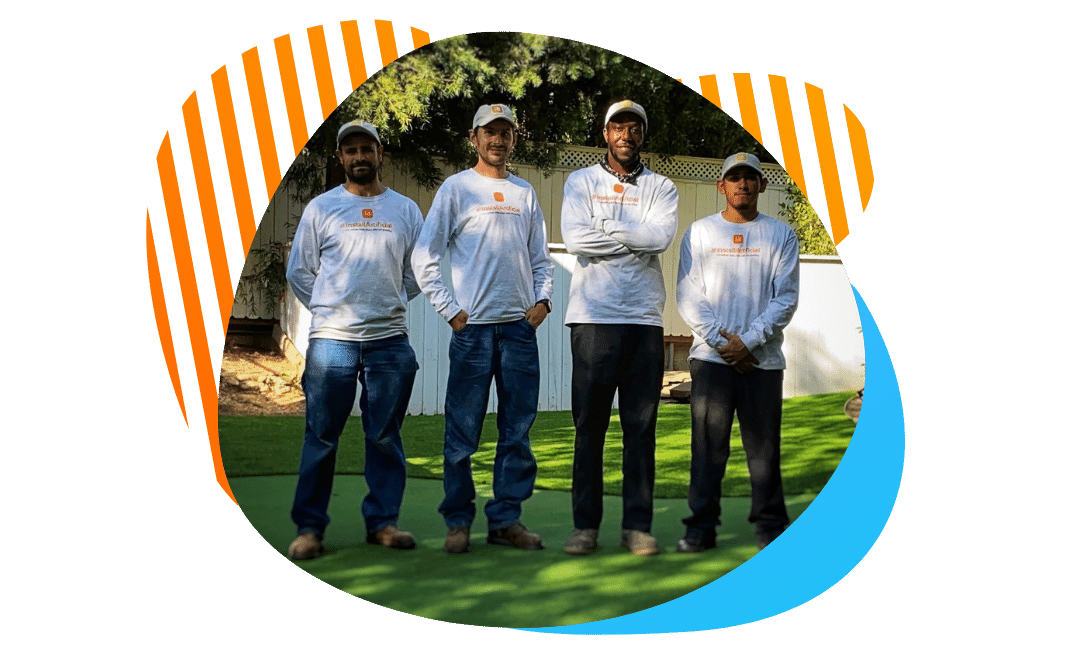
Installing artificial grass with companies specializing in the synthetic turf installation trade in los Angeles is usually the best way to go. They have specialized equipment. They get lower rates for soil removal and road base delivery. And they seam artificial grass on a daily basis. As a result you get a lawn that is seamless, natural looking and serving you for years.
You can also get an idea about the cost of installing artificial grass by using the cost calculator below. No email is required.
Learn about the pros and cons of installing artificial grass on your own versus hiring a professional in Los Angeles.
Here's a handy DIY tip for installing artificial turf: Simplify the process by laying synthetic grass over a thin layer of decomposed granite. This trick saves you from the hassle of moving heavy loads of soil and compacting it. Don't forget to use weed fabric for added protection.
Secure the turf to bender boards on the sides for stability and safety. Avoid nailing the turf down, as nails won't hold in decomposed granite or soil and may eventually become a hazard. Instead, opt for additional infill to keep the turf securely in place.
It can be challenging to achieve a seamless surface with a DIY installation that falls short of meeting manufacturer specifications. This type of installation may compromise the longevity and safety of your lawn, making it not the most ideal choice for lasting beauty and functionality. However, if you're in a time pinch and do not have many options, this may work for you.
When it comes to installing artificial grass, hiring a professional can offer numerous advantages that DIY methods may not provide. Professionals have the expertise and specialized equipment needed to ensure a seamless and high-quality installation. They can handle tasks such as soil removal, road base delivery, and turf seaming with precision and efficiency. By entrusting the installation to professionals, homeowners can rest assured that their artificial lawn will not only look natural but also last for years to come.
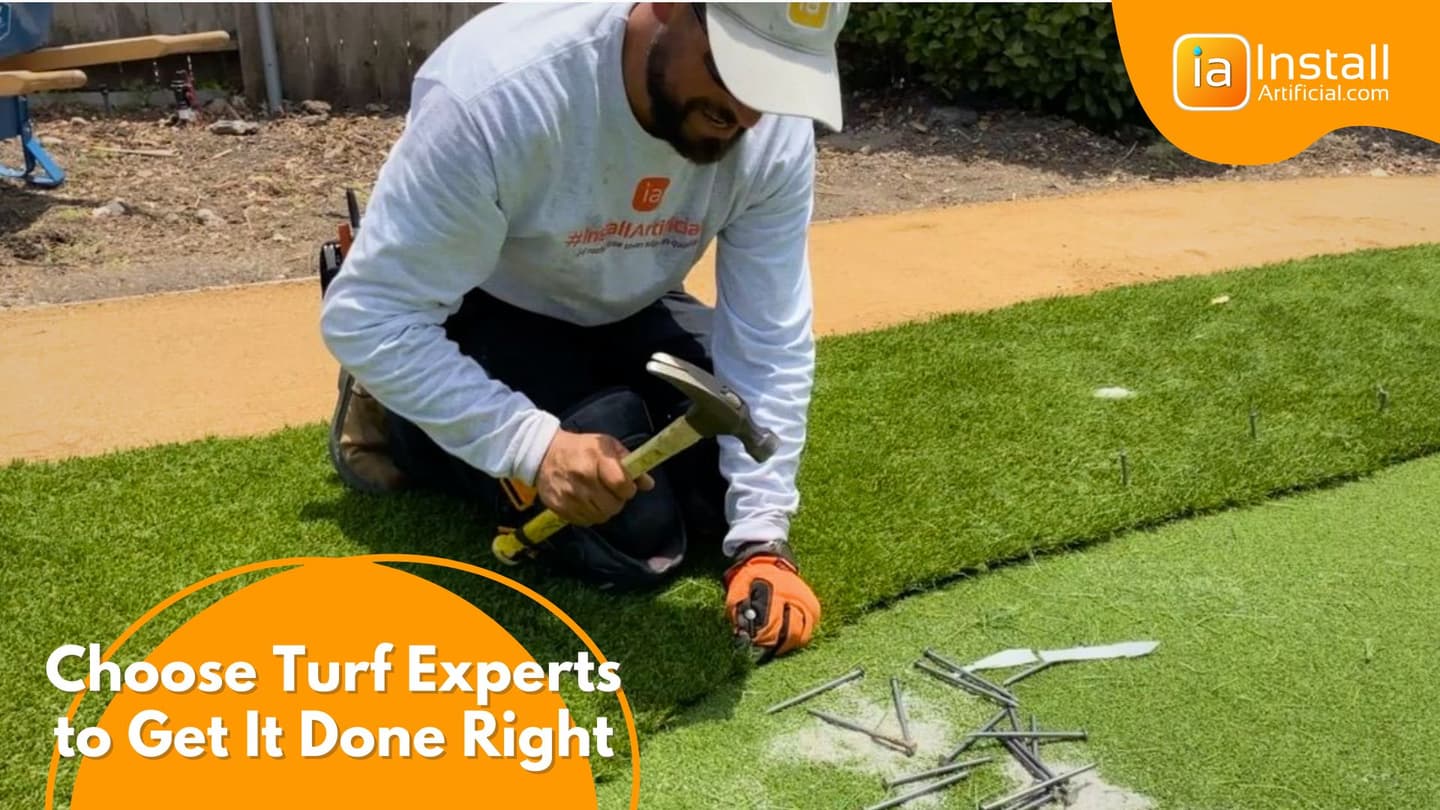
Furthermore, professional installers often have access to lower rates for materials and services, ultimately saving homeowners time and money. They understand the intricacies of synthetic grass installation, such as proper base preparation and securing the turf to bender boards for safety. By choosing professional installation, homeowners can enjoy a hassle-free process and a beautiful, long-lasting artificial lawn that enhances the aesthetics and functionality of their outdoor space.
Professional installers of synthetic grass will also take care of irrigation and small plants. Most of them will proudly offer eco friendly, non toxic, lead free synthetic grass for your future project.
Many individuals tend to overlook the upkeep of their artificial turf, relying on the rain to wash away any debris and gardeners to blow off leaves (often causing damage by using hot engine blowers over the surface). Surprisingly, after 3, 4, or even 5 years of use, these lawns still maintain a fresh and pristine appearance.
Below, you can find recommendations on how to maintain synthetic turf in Los Angeles.
Survey the artificial grass surface for any debris, fallen leaves, or unwanted items.
Eliminate any visible debris with the help of a leaf blower or a gentle-bristled brush.
Be on the lookout for indications of damage or deterioration, like tears or loose seams.
Brush the turf fibers using a stiff-bristled brush to restore their upright position and prevent matting.
Inspect the edges and seams of the turf for any signs of lifting or separation.
Remove any weeds or plant growth around the perimeter of the turf.
Check the infill levels and top up if necessary to maintain the recommended depth.
Deep clean the turf using a mild detergent and water solution to remove any built-up dirt, grime, or organic matter.
Inspect the infill material for compaction and rake or fluff it up to ensure proper drainage and resilience.
Inspect the drainage system for any blockages or issues and clear them as needed.
Check the infill levels and top up if necessary to maintain the recommended depth.
Conduct a thorough inspection of the entire turf surface for any signs of damage, including tears, holes, or bald spots.
Repair any damaged areas using appropriate patching materials and techniques.
Inspect the infill material for degradation and replace if necessary to maintain optimal performance.
Apply a turf deodorizer to eliminate any odors caused by pet waste or other sources.
Hire a professional turf maintenance company to conduct a comprehensive inspection and maintenance service.
Refresh the infill material by removing a portion of the old infill and adding new material as needed.
Check the turf for proper drainage and address any issues with the base or sub-base if necessary.
Reapply any specialized treatments or coatings to enhance the turf's durability and appearance.
Each day, we are frequently asked about the lifespan of synthetic turf. We typically advise homeowners to consider replacing their lawns after approximately 10 years of use. The primary reason for replacement often stems from the accumulation of dirt on artificial turf surfaces.
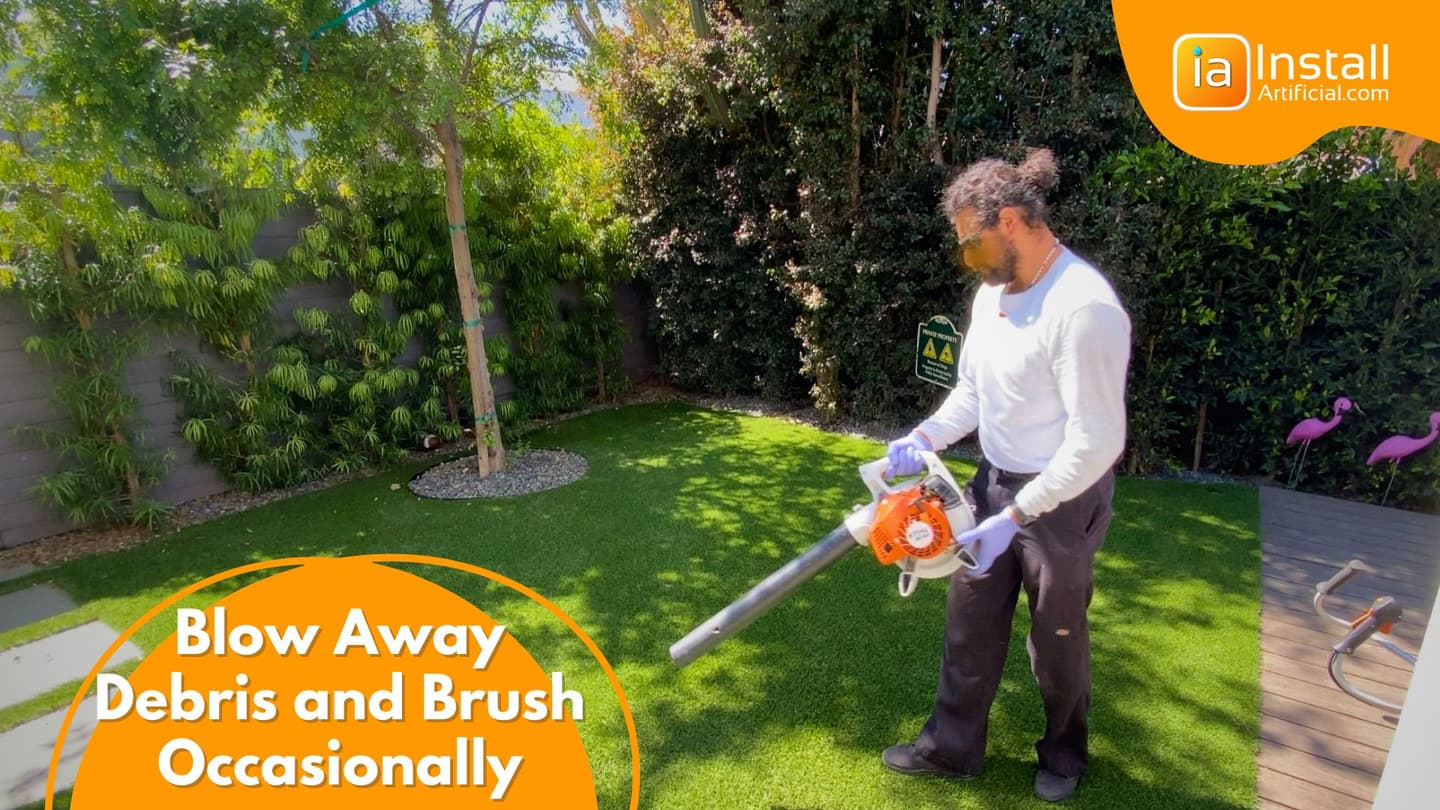
To properly clean and maintain your synthetic turf, it is essential to establish a routine that will ensure its longevity and pristine appearance. Regular maintenance not only enhances the aesthetic appeal of your lawn but also prolongs its lifespan, saving you time and money in the long run. Ask your gardener to blow away leaves, brush turf from time to time and hose down the dust. Using soapy water to sanitize turf every season is a good idea.
At least once a year, clean your lawn professionally. This will extend your lawn's life and increase your outdoor living's comfort level in Los Angeles.
Reputable Los Angeles artificial grass suppliers typically do not sell turf to end clients without a premium cost. They prioritize their loyal professional contractors who rely on them for large volumes of quality materials. It's not advisable to purchase materials directly from a supplier in an attempt to cut costs on artificial grass installation, as you may end up paying almost double the price for the materials. If you're not planning to DIY, it is recommended to let your professional installers buy the grass on their end.
When contractors discover that the homeowner has purchased the materials themselves, they often choose to avoid the project. This decision is influenced by several factors. Firstly, there is typically an insufficient amount of materials acquired, leading to potential conflicts over delays in work. Secondly, the installer is then tasked with figuring out how to properly seam the turf together, a task that can be both time-consuming and challenging. Lastly, there is a concern among installers about the likelihood of receiving payment from such clients, adding another layer of complexity to the project.
Artificial turf sold at retail stores often lacks the quality and affordability found when purchasing from reputable suppliers.
You can search for synthetic turf online or visit your local building materials.
One of the main concerns with synthetic turf installation is the issue of fading, particularly in the sunny climate of Los Angeles. While initially appearing lush and soft, artificial grass can quickly turn yellow within a few years post-installation, especially when using foreign materials. Often, these artificial grasses offer more vibrant colors, as suppliers aim to preserve the color for an extended period. Using quality suppliers who color their materials in natural tones ensures that UV inhibitors maintain the color over time.
Assessing the quality of synthetic grass based on a sample can be challenging. Despite a promising sample, the actual turf may hide defects like visible stripes, wrinkles, melted areas, or uneven heights, which only become apparent during installation, infilling, and brushing processes.
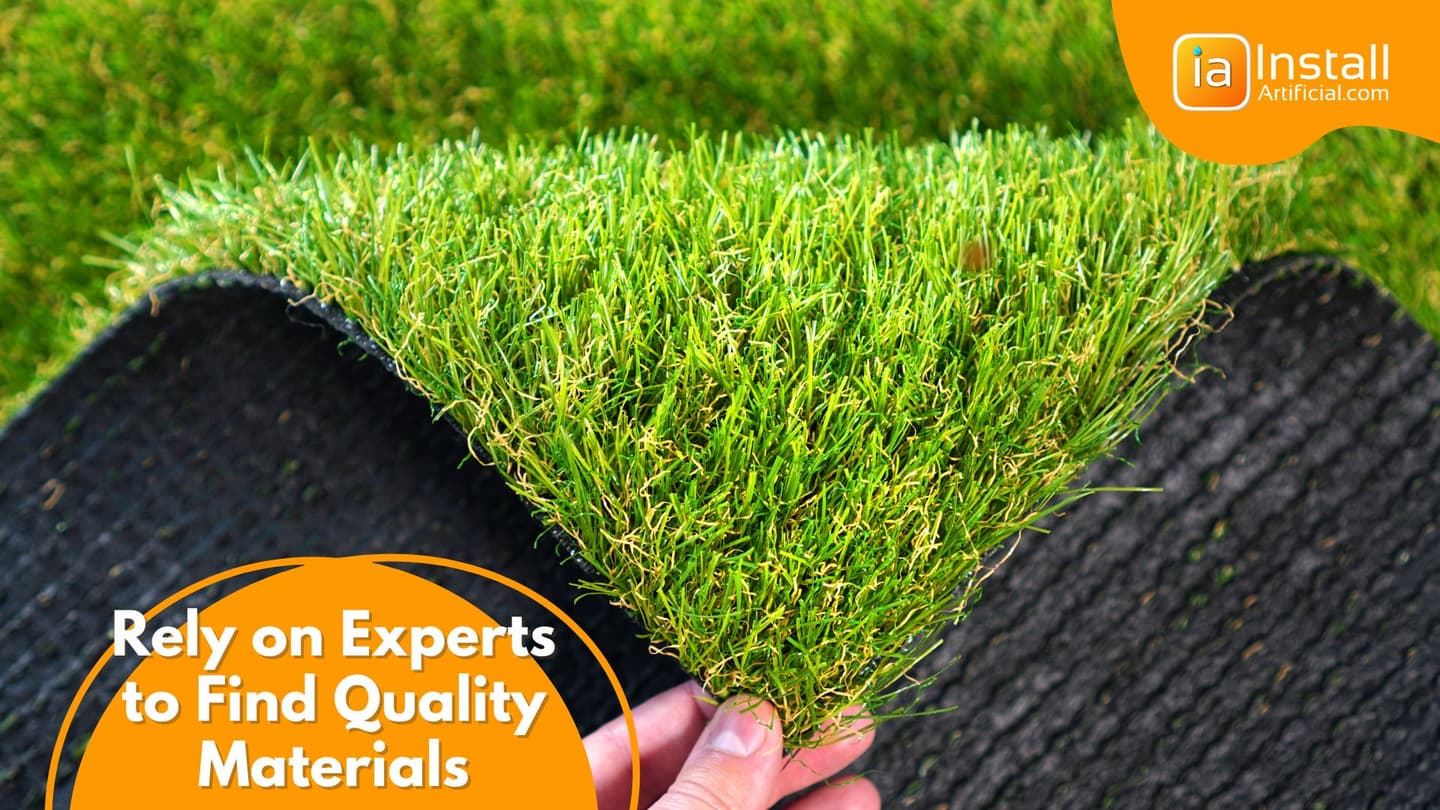
Purchasing artificial turf separately may not guarantee a refund for the installation, making it important to seek out trusted artificial turf installers in Los Angeles to help make your choice. These professionals navigate fake turf daily, knowing the difference between high-quality options suitable for construction and those that fall short, ultimately saving you time and resources.
It's essential to dive into reviews and testimonials to gain valuable insights. Evaluate the feedback and determine if it resonates with your needs. Keep in mind that installers catering to Los Angeles might also extend their services to neighboring cities like Long Beach, Beverly Hills, Santa Monica, West Hollywood, Palos Verdes, Pasadena, and Orange County. Additionally, some companies operate from multiple locations, offering a broader scope to explore.

A comprehensive guide for buying and installing artificial grass in Orange County.
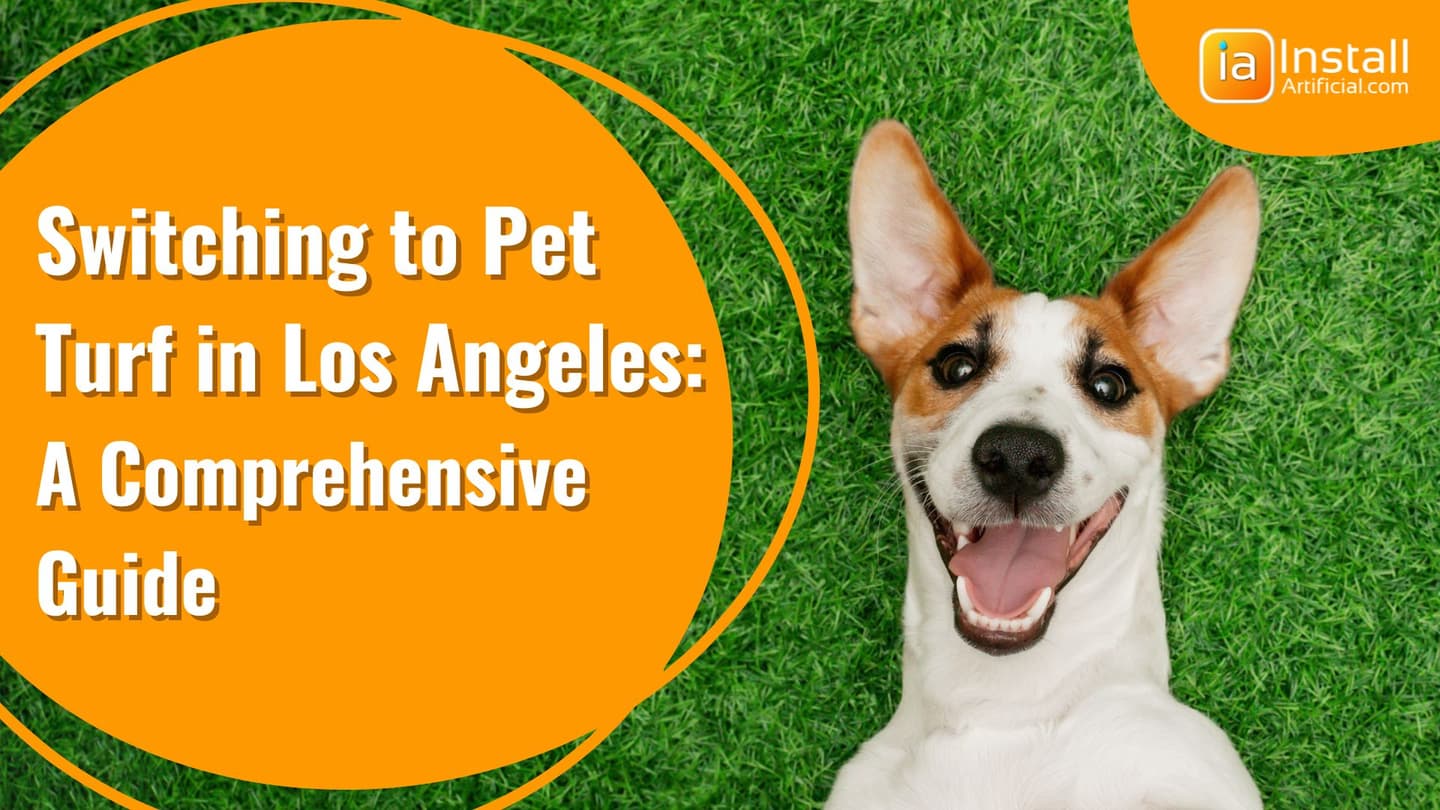
Are you a homeowner or business owner in Los Angeles looking to enhance your outdoor space with pet turf? Understanding the costs associated with pet turf installation...